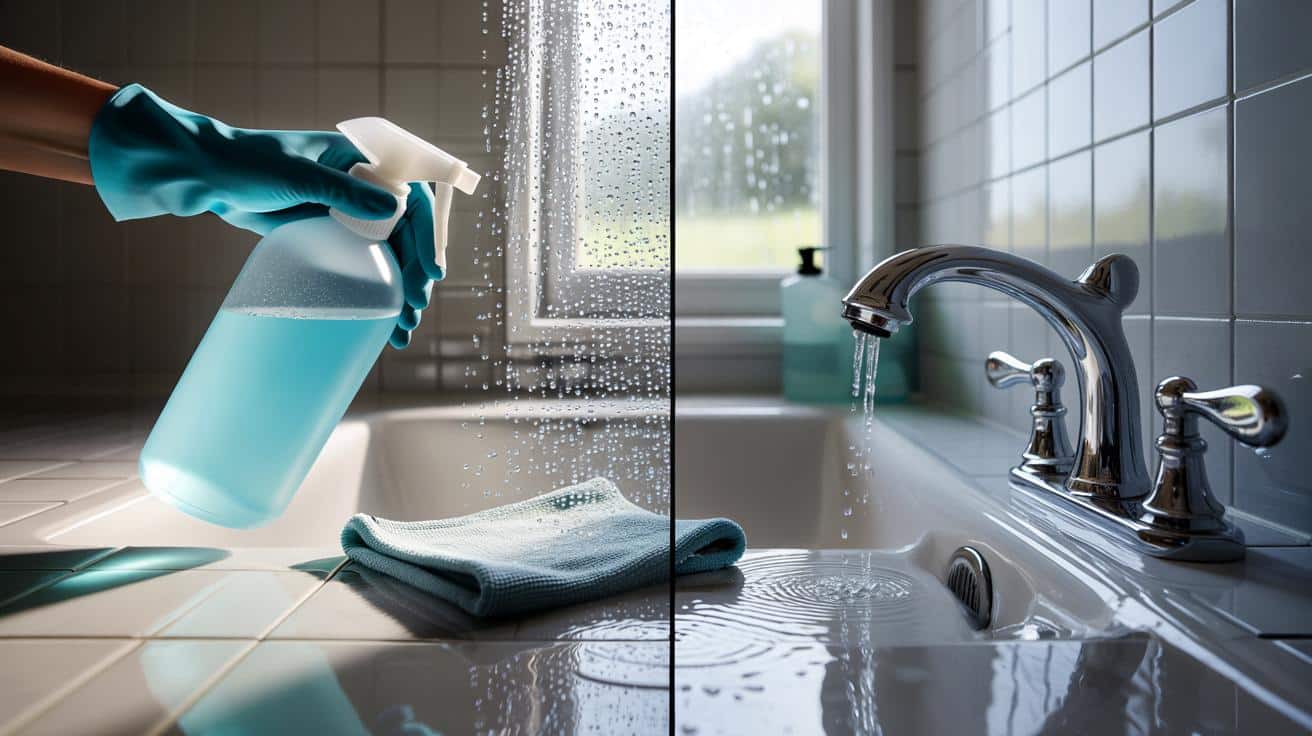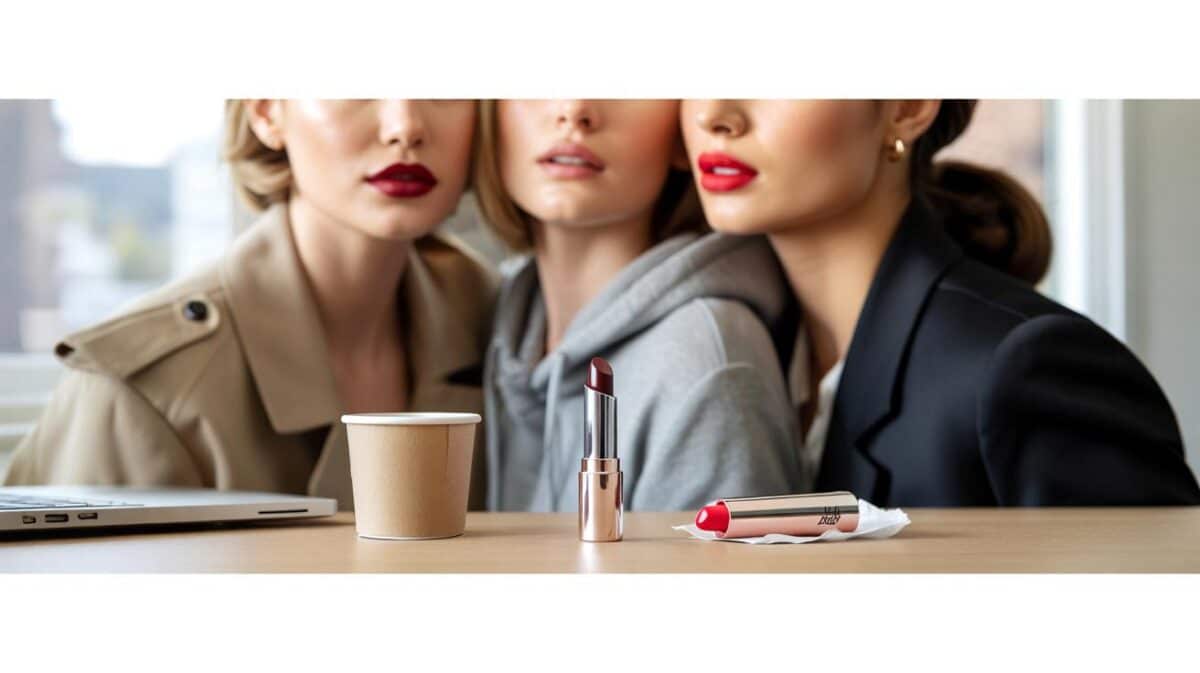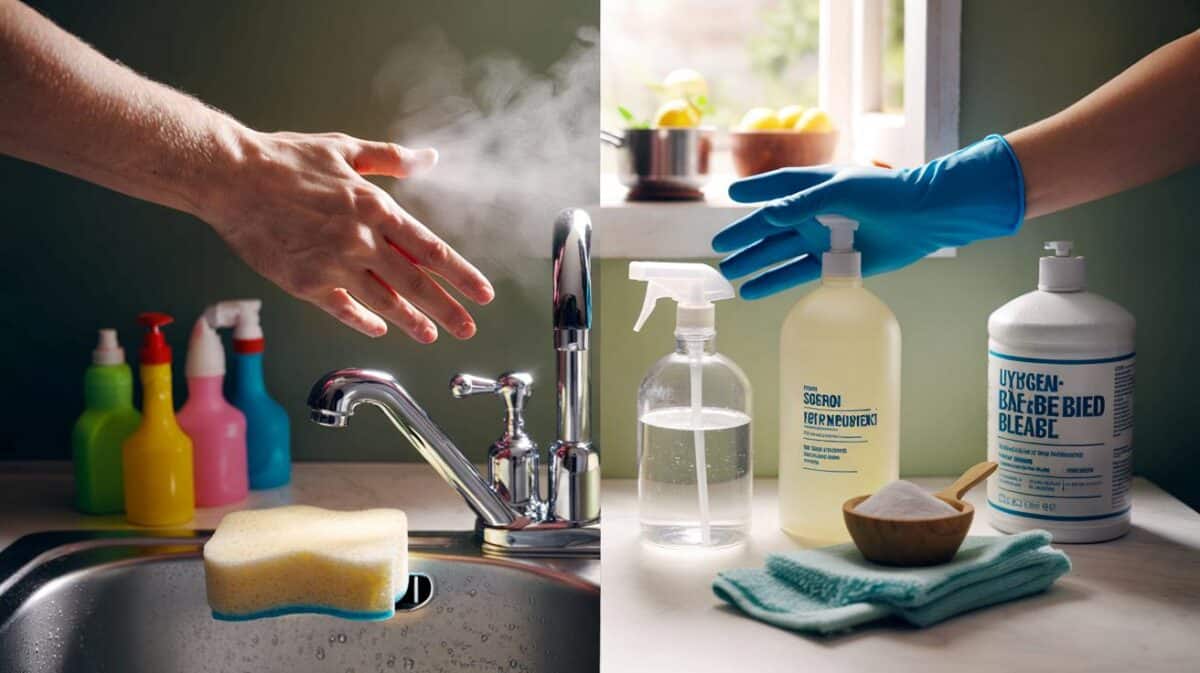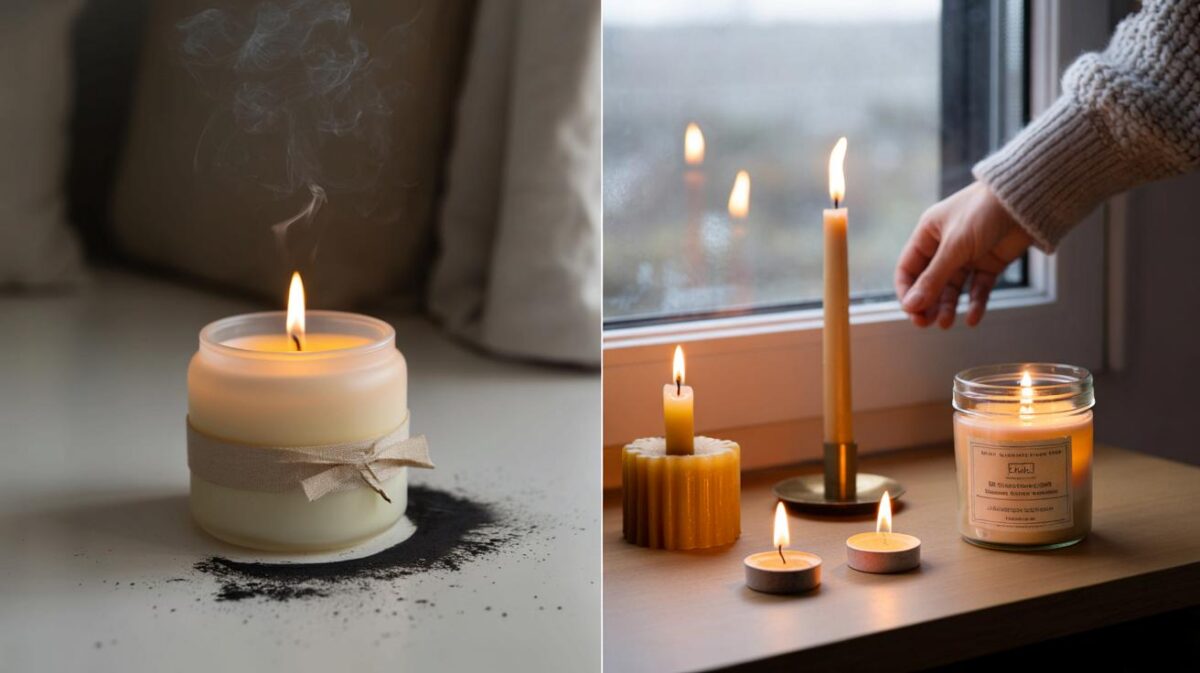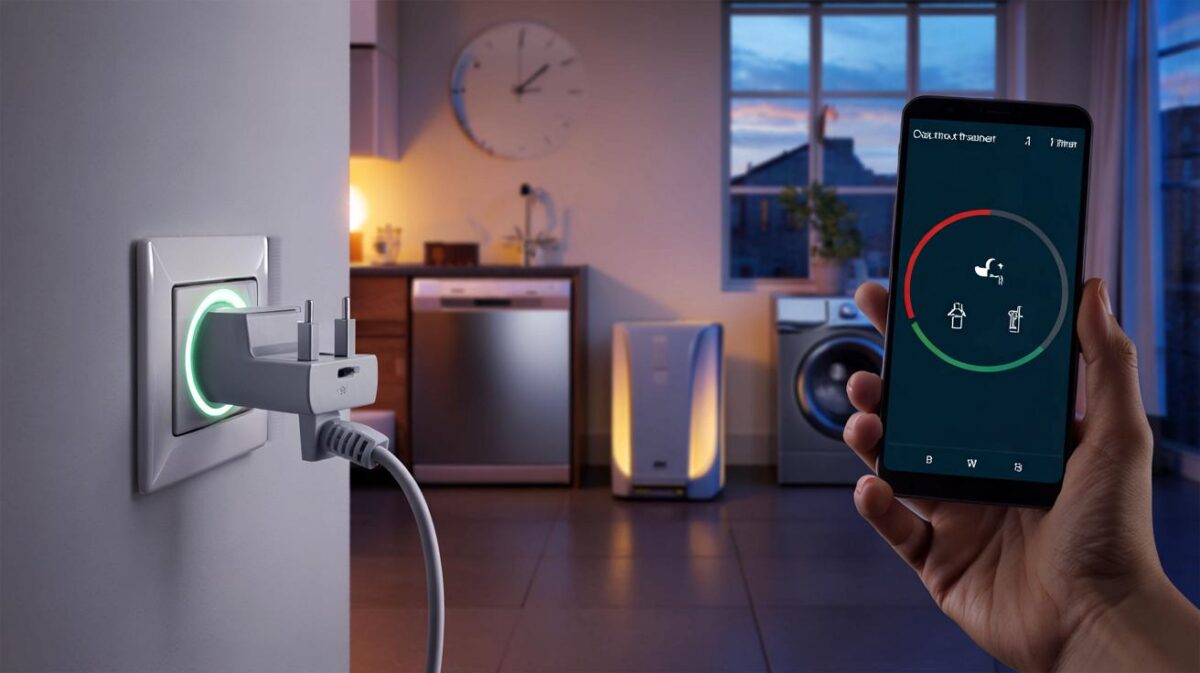You’ve scrubbed, rinsed and wiped, yet the glass still dries cloudy and the taps spot up by noon. The game-changer might already be sitting under your sink.
The cleaner who’d been at it for twenty years moved like a ballet dancer with a spray bottle, a quiet rhythm to her work. No fuss, no drama, just a slow mist across a chalky shower screen and a swift buff with a tired microfibre.
She wasn’t using glass cleaner. The bottle had no label, only a blue glare and a scent I couldn’t place. She winked, the sort of conspiratorial look that suggests the trick is almost too simple to show. Then the glass went from dull to hotel-bright in seconds, as if the hard water had never existed. It wasn’t magic. It was rinse aid.
And it behaves nothing like you expect.
The secret is in the slip
Rinse aid’s day job is in your dishwasher, helping plates dry without spots. It lowers water’s surface tension so droplets don’t cling; they slide off in sheets. That same physics works on shower glass, mirrors, even chrome taps that love to collect freckles of limescale.
When sprayed lightly and buffed, rinse aid leaves a whisper-thin film that stops water beading, the very thing that makes glass look blotchy. The result isn’t greasy or perfumed. It’s that understated, clean gleam you notice only when it’s gone. The trick isn’t elbow grease — it’s surface tension.
Picture a short-let turnover on a rainy Sunday in Manchester. The shower screen is clouded with weeks of steam and splash-back, the tap bases ringed like tree trunks. A standard scrub will get you clean, then the first shower puts the spots right back.
Now switch tactics. Mix a teaspoon of rinse aid into a litre of warm water, spray, and buff until squeak-free. The next morning, water slides off in smooth sheets rather than sitting in stubborn beads. The cleaner leaves on time. The guests message to ask what glass cleaner was used. You smile because it wasn’t glass cleaner at all.
Why does it feel almost unfair? Rinse aid is built with non-ionic surfactants that don’t foam like washing-up liquid. They don’t “clean” in the traditional way. They change how water behaves, making it flow so evenly that residue struggles to settle and dry into marks.
That sheeting action means fewer places for minerals to grip. On hard-water days, it’s a lifesaver. It also speeds up drying, which matters when you’ve got five rooms to finish and daylight fading. Less moisture lingering on glass equals fewer spots. Simple physics, big difference.
The method cleaners don’t shout about
Make a no-fuss, anti-spot spray: 1 teaspoon of rinse aid to 1 litre of warm water in a clean trigger bottle. For heavier use on shower screens, go up to 2 teaspoons per litre, then dial back once the glass behaves. Spray lightly onto clean, damp glass or chrome, then buff dry with a flat-weave microfibre until it squeaks.
Use it as a “finisher” after your usual clean. Do the soap-scum removal first, rinse, then apply the rinse-aid mix and buff. It also works on bathroom tiles around the splash zone, stainless steel sinks, and glossy splashbacks. Don’t drench; a light mist is quicker, cleaner, and less likely to smear.
Mistakes to dodge? Overdoing it. More isn’t better here. A teaspoon goes a long way. Use too much and you’ll chase smears instead of shine. Keep it away from natural stone, unsealed wood, and matt finishes. Patch-test on an edge if you’re unsure. And store the bottle with a clear label so no one sprays it on the hob mid-cook.
Skip the floors. It’s a slip hazard and not worth the drama. Never mix with bleach or any other cleaner in the bottle. Gloves are sensible if your skin is touchy, and keep it out of reach of curious little hands. We’ve all stood in a bathroom thinking we’d blitz through a quick job and somehow made it worse. This stops that spiral fast.
Let’s be honest: no one does that every day. That’s the magic: you don’t have to. A weekly hit on glass and taps saves you from a daily wrestle with spots. In high-use homes, a 30-second post-shower mist and buff around eye-level keeps things ticking over. Most people will simply notice the bathroom stays calmer, clearer, and less needy.
“I don’t tell every client,” a London housekeeper told me, half-joking, “because it makes me look like I’ve worked a miracle. I just changed the water’s mind.”
- Quick mix: 1 tsp rinse aid + 1 L warm water.
- Where it shines: shower screens, chrome taps, stainless sinks, glossy tiles, mirrors.
- Avoid: natural stone, unsealed wood, matt finishes, floors.
- Routine: clean, rinse, light mist, buff to a squeak. Done.
A small habit with big payback
The reason this works so well is behavioural as much as chemical. You’re not adding another heavy step to your routine; you’re swapping a finale. That one tweak shortens future cleans because spots don’t set. Your bathroom looks “just done” for longer, which nudges you to keep it that way.
It also makes budget sense. A single bottle of rinse aid, used by the teaspoon, lasts ages. More time to enjoy your home, less time chipping at chalk. A teaspoon beats an hour of scrubbing. And yes, your dishwasher will forgive you for borrowing its best mate.
| Key points | Detail | Reader Interest |
|---|---|---|
| Rinse aid changes water behaviour | Lowers surface tension so water sheets off glass and chrome | Fewer spots and quicker drying without hard scrubbing |
| Tiny dose, big impact | 1 tsp per litre as a finishing mist, then buff | Cheap, fast, and easy to slot into any routine |
| Know where not to use it | Avoid stone, wood, matt finishes, and floors | Confidence to try it without mishaps |
FAQ :
- Can I use rinse aid on any shower glass?Yes on standard tempered glass and most treated screens. Patch-test on an edge if your glass has a special coating, and go lighter to start.
- Will it leave a greasy residue or smell?No, when diluted and buffed properly it dries clean and neutral. If you see smears, you used too much. Cut the dose and buff a touch longer.
- Is it safe for stainless steel and chrome taps?Yes. Spray lightly and buff dry. It helps repel splash marks and fingerprints on sinks, spouts, and handles.
- Can I use it on my car windscreen?It can work, but wiper chatter is a risk. If you try, use a very light dilution on the outside only and buff thoroughly. Dedicated screen-wash additives are designed for wipers and are the safer bet.
- How often should I apply it in the bathroom?Weekly as a finisher is plenty in most homes. In hard-water hotspots or busy households, a quick mist-and-buff every few days keeps the sheeting effect alive.
